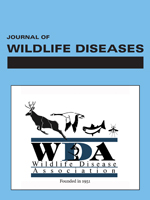A study of the physiologic and ecologic factors involved in a spontaneous seasonal gallstone cycle of deer mice (Peromyscus maniculatus gambelii) was conducted at the Tulelake National Wildlife Refuge (California, USA) from March 1991 to June 1992. The specific hypothesis examined was whether or not seasonal increases in dietary fiber intake provides the necessary conditions for a solubility defect, or supersaturation mechanism, resulting in precipitation of cholesterol gallstones. Results indicated that in addition to the seasonal gallstone prevalence cycle, these deer mice exhibit significant seasonal cycling in serum cholesterol, serum bile acids, fecal bile acids, and diet composition. These physiologic and dietary cycles were phase-advanced 3 mo over the gallstone prevalence cycle, indicating an approximate 3 mo time period for gallstone formation under field conditions. Further, seasonal dietary fiber (plant material and seeds) was positively correlated with both serum cholesterol and the fecal bile acids. This suggests that in wild deer mice, variations in dietary fiber may significantly affect the resorption of bile acids, thereby providing a potential physiologic and nutritional mechanism for spontaneous cholesterol gallstone formation.
How to translate text using browser tools
1 January 2003
SPONTANEOUS GALLSTONE FORMATION IN DEER MICE: INTERACTION OF CHOLESTEROL, BILE ACIDS, AND DIETARY FIBER
Dorothy A. Ginnett,
Jerold H. Theis,
J. Jerry Kaneko

Journal of Wildlife Diseases
Vol. 39 • No. 1
January 2003
Vol. 39 • No. 1
January 2003
bile acids
cholelithiasis
cholesterol
deer mouse
fiber
gallstones
Peromyscus maniculatus




